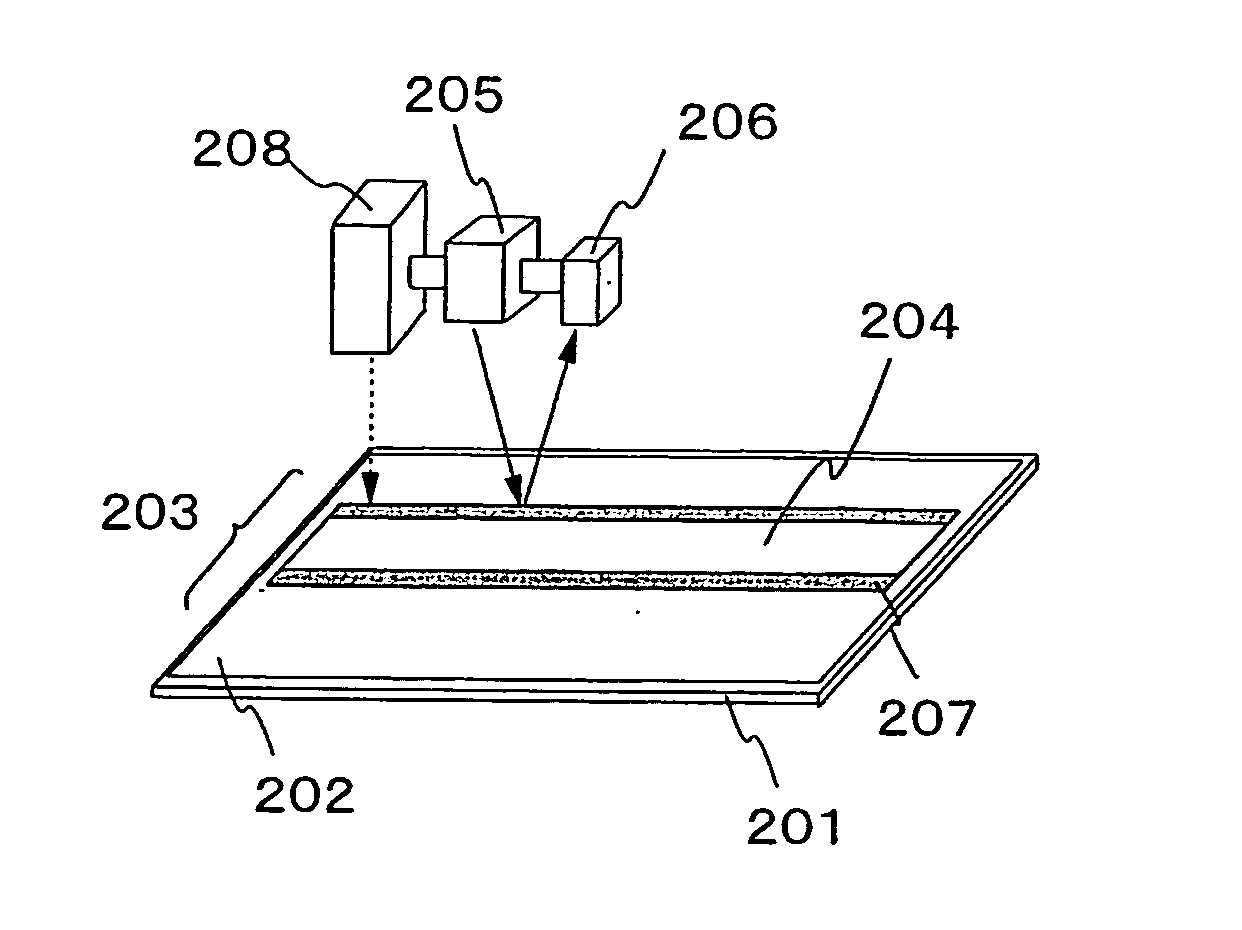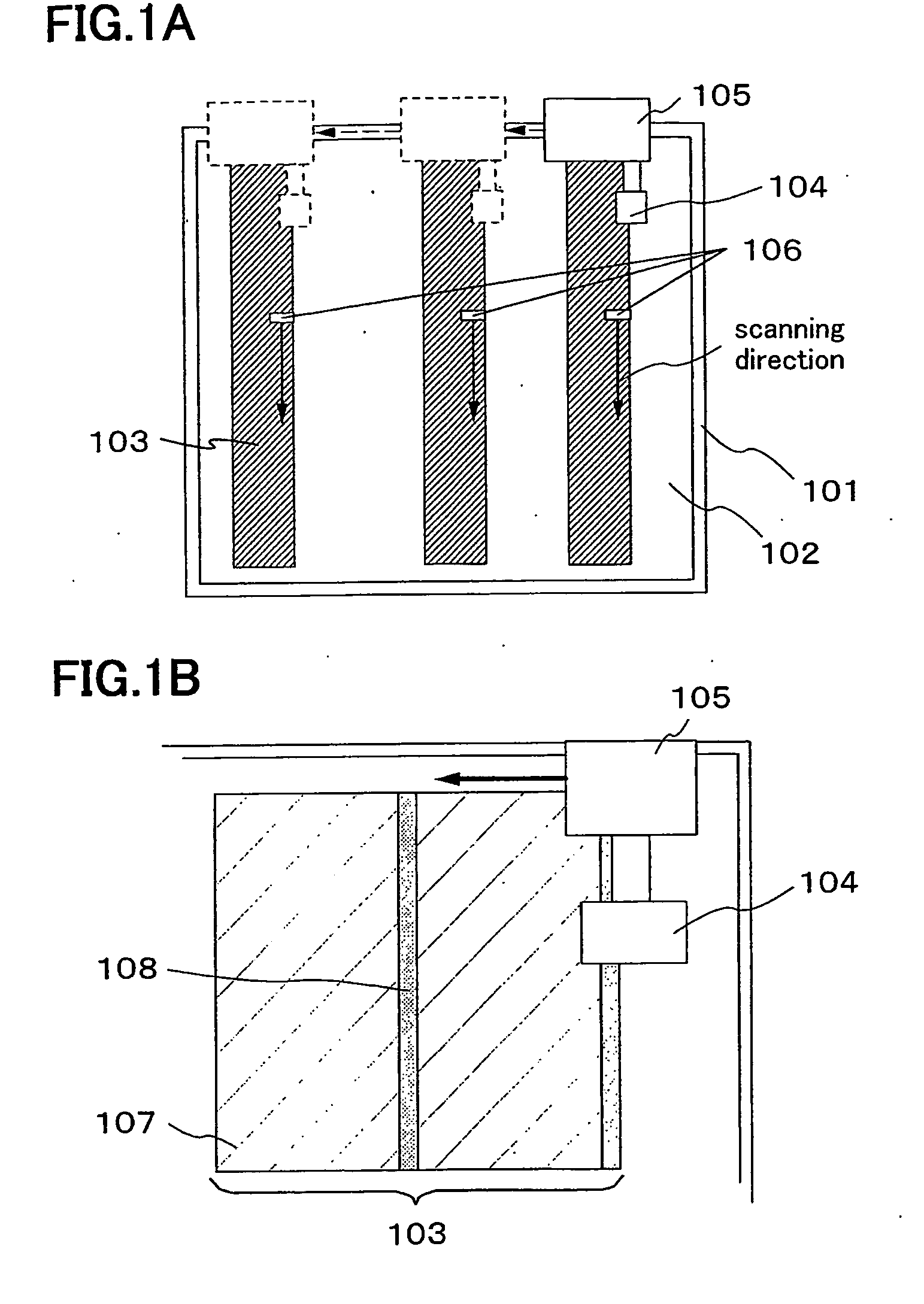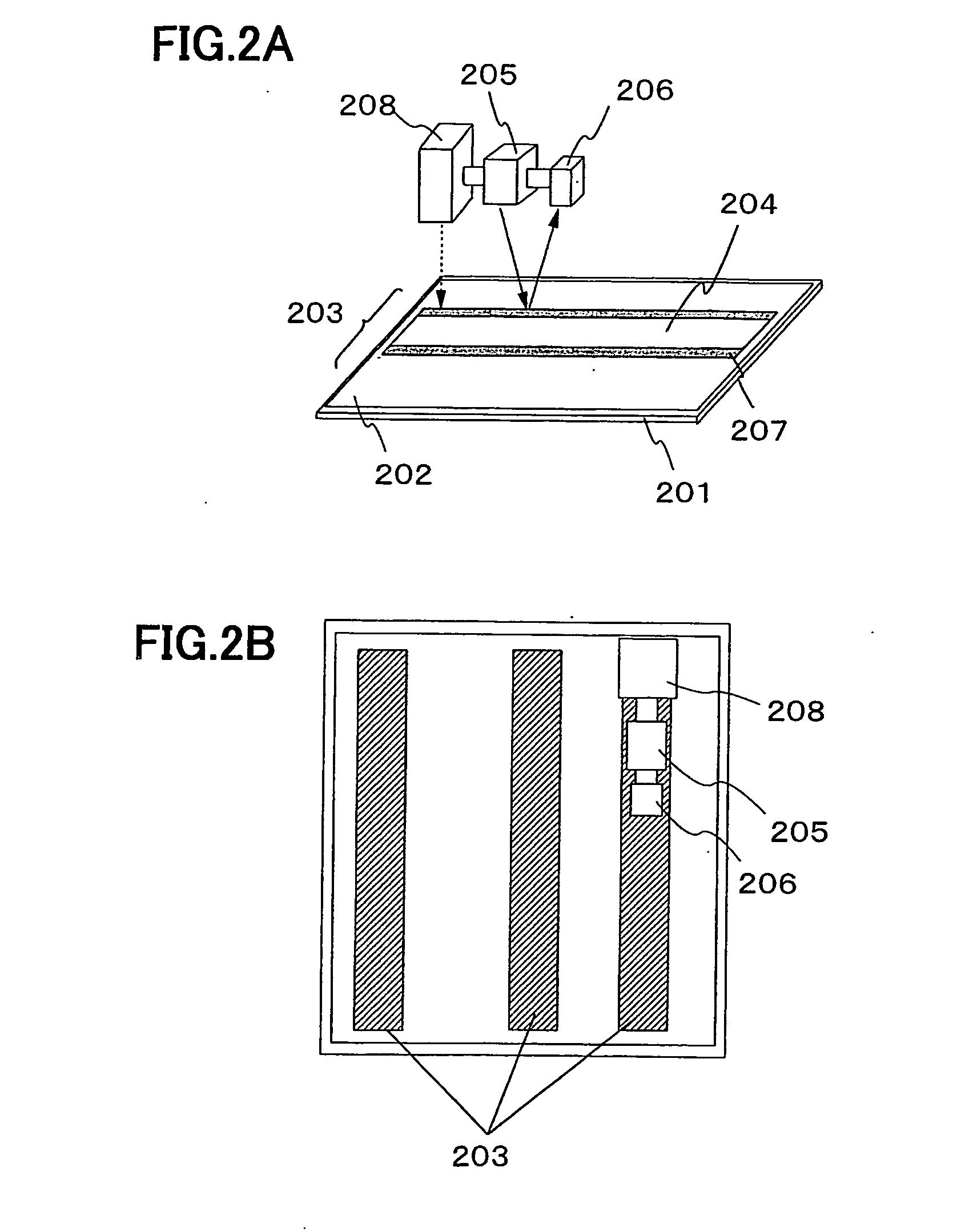Light Exposure Apparatus and Manufacturing Method of Semiconductor Device Using the Same
a technology of light exposure apparatus and manufacturing method, which is applied in the direction of semiconductor/solid-state device testing/measurement, photomechanical apparatus, instruments, etc., can solve the problems of inferior tft characteristics to those of tft formed in a large grain size region, and the difficulty of making the distance between laser irradiation regions exactly the sam
- Summary
- Abstract
- Description
- Claims
- Application Information
AI Technical Summary
Benefits of technology
Problems solved by technology
Method used
Image
Examples
embodiment 1
[0096]In this embodiment, an example of detecting a large grain size region and a poorly crystalline region by using laser which is separately provided is explained.
[0097]First, a non-single crystal semiconductor film 202 is formed over a substrate 201 in the same manner as in Embodiment Mode 1. Then, as shown in FIG. 2A, laser irradiation is conducted using the non-single crystal semiconductor film 202 as an irradiated surface to form a laser irradiation region 203.
[0098]Next, a resist is formed, and a large grain size region 204 in the laser irradiation region 203 is detected to determine a place where a photolithography step is conducted. In this embodiment, laser 205 and an optical sensor 206 are used. It is to be noted that the resist has only to be able to transmit the laser 205 to the degree that the large grain size region 204 and the poorly crystalline region 207 can be distinguished from each other.
[0099]The wavelength of the laser 205 is required to be able to detect the ...
embodiment 2
[0109]In this embodiment, a process of manufacturing a CMOS transistor using a p-channel TFT and an n-channel TFT manufactured by using the invention is explained with reference to drawings.
[0110]FIG. 8A shows a state just after laser irradiation is conducted with a plurality of laser irradiation apparatuses with respect to an amorphous semiconductor film 802 formed over a substrate 800. Hereinafter, a manufacturing process viewed from a cross section taken along a dotted line A-B in this drawing is explained.
[0111]As shown in FIG. 8B, a base film 801 is formed over a substrate 800 having an insulating surface. In this embodiment, a glass substrate is used as the substrate 800. As the substrate used here, a glass substrate formed of barium borosilicate glass, aluminoborosilicate glass, or the like, a quartz substrate, a ceramic substrate, a stainless steel substrate, or the like can be used. Moreover, although a substrate formed from synthetic resin typified by acrylic or plastic su...
embodiment 3
[0143]In this embodiment, a light emitting device using a light emitting element formed by using a TFT manufactured in another embodiment and an example of manufacturing the light emitting device are explained. The light emitting device which will be explained in this embodiment has a structure in which light is extracted from a substrate (hereinafter, referred to as opposing substrate) side which is opposed to a substrate having an insulating surface; however, the present invention is not limited to this structure and can be similarly used for a light emitting device having a structure in which light is extracted from a substrate side having an insulating surface, or a light emitting device having a structure in which light is extracted from both sides of a substrate side having an insulating surface and an opposing substrate side.
[0144]FIG. 12 is a top view of the light emitting device and FIG. 13 is a cross-sectional view taken along A-A′ of FIG. 12. Reference numeral 1200 denote...
PUM
| Property | Measurement | Unit |
|---|---|---|
| Grain size | aaaaa | aaaaa |
| Time | aaaaa | aaaaa |
| Concentration | aaaaa | aaaaa |
Abstract
Description
Claims
Application Information
 Login to View More
Login to View More - R&D
- Intellectual Property
- Life Sciences
- Materials
- Tech Scout
- Unparalleled Data Quality
- Higher Quality Content
- 60% Fewer Hallucinations
Browse by: Latest US Patents, China's latest patents, Technical Efficacy Thesaurus, Application Domain, Technology Topic, Popular Technical Reports.
© 2025 PatSnap. All rights reserved.Legal|Privacy policy|Modern Slavery Act Transparency Statement|Sitemap|About US| Contact US: help@patsnap.com



